Audi Q7 vs Mercedes GLB – Differences & prices compared
Compare performance, boot space, consumption and price in one view.
Find out now: which car is the better choice for you – Audi Q7 or Mercedes GLB?
The Audi Q7 (SUV) comes with a Petrol MHEV, Plugin Hybrid, Diesel MHEV or Petrol engine and Automatic transmission. In comparison, the Mercedes GLB (SUV) features a Petrol MHEV or Diesel engine with Automatic transmission.
When it comes to boot capacity, the Audi Q7 offers 887 L, while the Mercedes GLB provides 570 L – depending on how much space you need. If you’re looking for more power, decide whether the 507 HP of the Audi Q7 or the 320 HP of the Mercedes GLB suits your needs better.
In terms of consumption, the values are 1.20 L per 100 km for the Audi Q7, and 5.60 L for the Mercedes GLB.
Price-wise, the Audi Q7 starts at 69300 £, while the Mercedes GLB is available from 40500 £. Compare all the details and find out which model fits your lifestyle best!
In the competitive landscape of luxury SUVs, the Audi Q7 and Mercedes GLB each offer distinct advantages, appealing to different segments of the market. The Q7, with its spacious three-row seating and advanced technology features, is perfect for families craving comfort and practicality, while the more compact GLB stands out for its agile handling and stylish design. Both vehicles promise an exceptional driving experience, but the choice ultimately boils down to personal priorities in space and dynamics.
Audi Q7
The Audi Q7 combines luxurious comfort with impressive versatility, making it a standout choice in the SUV market. Its sophisticated design and meticulous attention to detail create an elegant yet robust presence on the road. With advanced technology and a focus on safety, the Q7 ensures a premium driving experience for both the driver and passengers.
details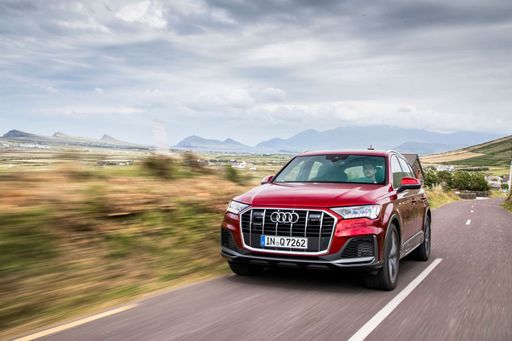 @ audi-mediacenter.com
@ audi-mediacenter.com
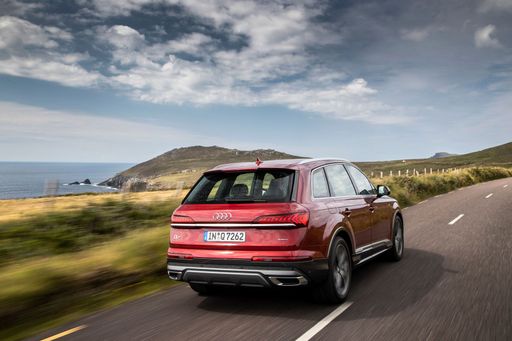 @ audi-mediacenter.com
@ audi-mediacenter.com
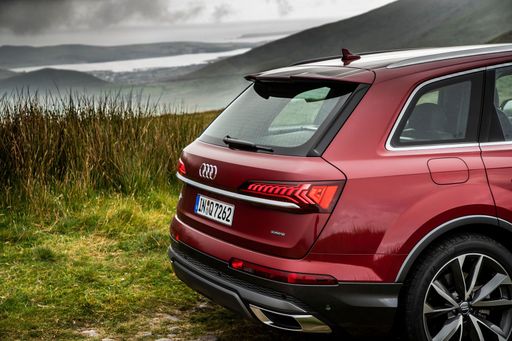 @ audi-mediacenter.com
@ audi-mediacenter.com
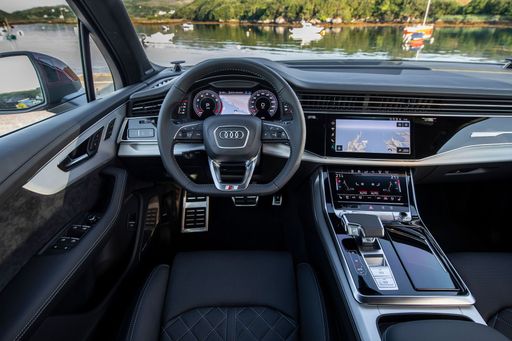 @ audi-mediacenter.com
@ audi-mediacenter.com
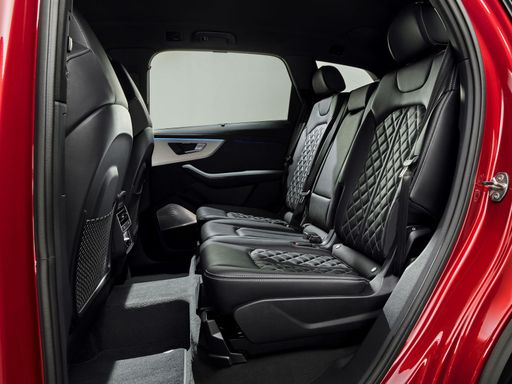 @ audi-mediacenter.com
@ audi-mediacenter.com
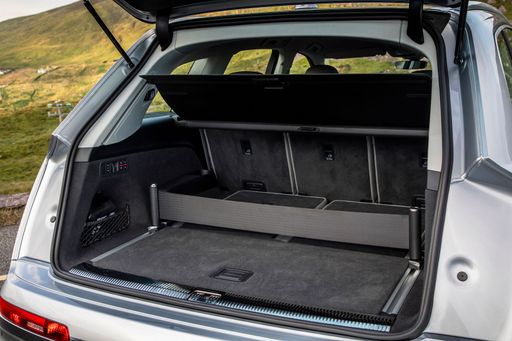 @ audi-mediacenter.com
@ audi-mediacenter.com
Mercedes GLB
The Mercedes-Benz GLB exudes a robust yet sophisticated presence, combining the versatility of an SUV with the elegance the brand is renowned for. Its spacious interior is thoughtfully designed to accommodate modern lifestyles, offering flexibility and comfort for both drivers and passengers. With advanced technology seamlessly integrated throughout, the GLB ensures a driving experience that is both dynamic and intuitive.
details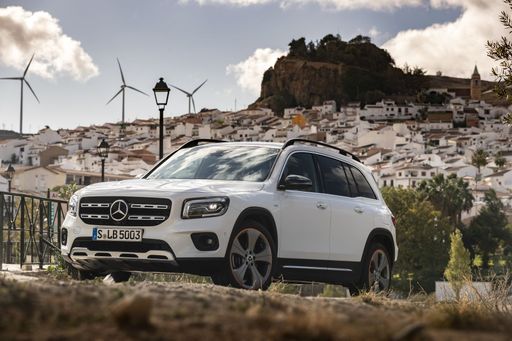 @ group-media.mercedes-benz.com
@ group-media.mercedes-benz.com
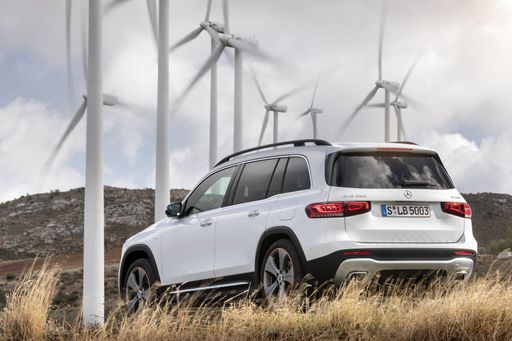 @ group-media.mercedes-benz.com
@ group-media.mercedes-benz.com
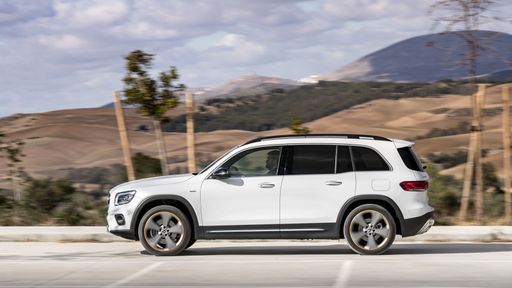 @ group-media.mercedes-benz.com
@ group-media.mercedes-benz.com
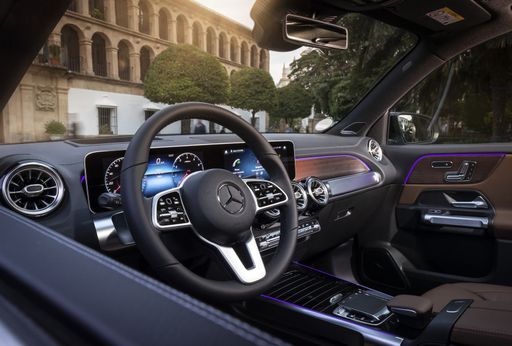 @ group-media.mercedes-benz.com
@ group-media.mercedes-benz.com
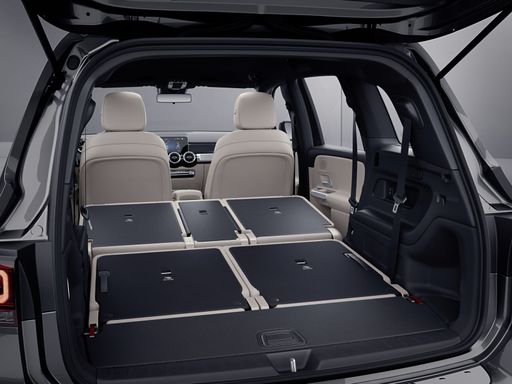 @ group-media.mercedes-benz.com
@ group-media.mercedes-benz.com
Introducing the Giants: Audi Q7 vs. Mercedes GLB
In the world of luxury SUVs, two heavyweights dominate the conversation—Audi's Q7 and Mercedes-Benz's GLB. Both vehicles bring significant engineering prowess and premium features, but they cater to slightly different markets. In this comparison, we’ll evaluate their technical specifications, innovations, and overall performance to help you choose the best option for your needs.
Design and Dimensions
Starting with dimensions, the Audi Q7 is noticeably larger, measuring 5072 mm in length and 1970 mm in width, making it a spacious vehicle for families and enthusiasts alike. In contrast, the Mercedes GLB is more compact at 4634 mm long and 1834 mm wide. Both SUVs provide a commanding presence on the road but target slightly different demographics; the Q7 is more geared towards families requiring additional space with 7-seater options, while the GLB is perfect for urban dwellers who may prioritize maneuverability.
Performance and Engine Options
When it comes to engine offerings, the Audi Q7 has a broader selection. It features a range of powertrains, from a 231 HP diesel MHEV to a powerful 507 HP petrol option. The Q7 emphasizes performance with acceleration times as low as 4.1 seconds for its top-end variant. Fuel consumption varies across models, with some petrol engines featuring a consumption rate as high as 12 L/100km, while diesel options are more efficient, averaging around 7.8 L/100km.
The Mercedes GLB, though presenting fewer options, still offers a potent mix of performance with its petrol MHEV and diesel engines, peaking at 320 HP. Acceleration in the GLB can achieve a time of just 5.5 seconds, which is impressive for its class. However, it distinctly focuses on efficiency with fuel consumption rates from 5.6 to 9 L/100km, catering to drivers who prefer saving on fuel costs.
Innovation and Technology
Both the Audi Q7 and Mercedes GLB are packed with cutting-edge technology. The Q7 boasts the renowned Audi Virtual Cockpit, providing a customizable digital dashboard that integrates navigation, infotainment, and performance metrics seamlessly. Its MMI infotainment system is user-friendly and includes features like smartphone integration and app connectivity.
On the other hand, the GLB shines with Mercedes-Benz’s MBUX (Mercedes-Benz User Experience), featuring a voice-activated assistant and a high-resolution touchscreen display that offers impressive usability. The GLB also provides various driver assistance systems, enhancing safety and convenience.
Interior Comfort and Space
When it comes to comfort, the Audi Q7 continues to lead with its optional third-row seating, allowing up to seven passengers. The interior is luxuriously appointed with high-quality materials and ample cargo space, ranging from 563 L to 887 L with the seats configured appropriately.
The GLB, while a 5-seater, offers flexibility with rear-seat configurations and a trunk capacity of 570 L, making it versatile for everyday use. The cabin is also crafted with sophistication, equipped with quality materials and a modern ergonomic layout.
Conclusion: Choosing Your Ideal SUV
The choice between the Audi Q7 and Mercedes GLB ultimately depends on your personal needs and preferences. If you require a larger family SUV with powerful engine options, the Audi Q7 is certainly a strong contender. However, if you prioritize compact design with modern tech and impressive fuel efficiency, the Mercedes GLB effectively fulfills those requirements.
Both vehicles stand out in their respective classes, offering innovation, performance, and luxury at its finest. Whether you're cruising through city streets or embarking on family adventures, each model has something unique to offer.

|

|
|
|
|
Costs and Consumption |
|
|---|---|
|
Price
69300 - 99000 £
|
Price
40500 - 65300 £
|
|
Consumption L/100km
1.2 - 11.9 L
|
Consumption L/100km
5.6 - 9 L
|
|
Consumption kWh/100km
-
|
Consumption kWh/100km
-
|
|
Electric Range
83 - 84 km
|
Electric Range
-
|
|
Battery Capacity
22 kWh
|
Battery Capacity
-
|
|
co2
28 - 271 g/km
|
co2
146 - 204 g/km
|
|
Fuel tank capacity
75 - 85 L
|
Fuel tank capacity
52 - 60 L
|
Dimensions and Body |
|
|---|---|
|
Body Type
SUV
|
Body Type
SUV
|
|
Seats
5 - 7
|
Seats
5
|
|
Doors
5
|
Doors
5
|
|
Curb weight
2055 - 2460 kg
|
Curb weight
1640 - 1820 kg
|
|
Trunk capacity
563 - 887 L
|
Trunk capacity
565 - 570 L
|
|
Length
5072 mm
|
Length
4634 - 4650 mm
|
|
Width
1970 mm
|
Width
1834 - 1850 mm
|
|
Height
1703 - 1735 mm
|
Height
1665 - 1692 mm
|
|
Payload
640 - 885 kg
|
Payload
500 kg
|
Engine and Performance |
|
|---|---|
|
Engine Type
Petrol MHEV, Plugin Hybrid, Diesel MHEV, Petrol
|
Engine Type
Petrol MHEV, Diesel
|
|
Transmission
Automatic
|
Transmission
Automatic
|
|
Transmission Detail
Automatic Gearbox
|
Transmission Detail
Dual-Clutch Automatic
|
|
Drive Type
All-Wheel Drive
|
Drive Type
Front-Wheel Drive, All-Wheel Drive
|
|
Power HP
231 - 507 HP
|
Power HP
116 - 320 HP
|
|
Acceleration 0-100km/h
4.1 - 7.1 s
|
Acceleration 0-100km/h
5.5 - 11.5 s
|
|
Max Speed
226 - 250 km/h
|
Max Speed
188 - 250 km/h
|
|
Torque
500 - 770 Nm
|
Torque
230 - 400 Nm
|
|
Number of Cylinders
6 - 8
|
Number of Cylinders
4
|
|
Power kW
170 - 373 kW
|
Power kW
85 - 235 kW
|
|
Engine capacity
2967 - 3996 cm3
|
Engine capacity
1332 - 1991 cm3
|
General |
|
|---|---|
|
Model Year
2025
|
Model Year
2025
|
|
CO2 Efficiency Class
G, B
|
CO2 Efficiency Class
E, F, G
|
|
Brand
Audi
|
Brand
Mercedes-Benz
|
Audi Q7
Audi Q7: A Benchmark in Automotive Excellence
The Audi Q7 continues to hold its ground as a versatile and luxurious SUV, offering a rich blend of cutting-edge technology, impressive performance, and comfort. With its recent facelift, the Q7 introduces innovative elements that cater to modern-day driving demands. Explore the technical details and unique attributes that make the Audi Q7 a class leader.
Engine Options and Performance
The Audi Q7 is available with a range of engine options designed to suit various needs and preferences. These include Diesel Mild-Hybrid, Plug-in Hybrid, and Petrol Mild-Hybrid configurations. The power output for these engines ranges from 231 to an exhilarating 507 PS, catering to both efficiency seekers and performance enthusiasts. The Audi Q7 can accelerate from 0 to 100 km/h in as little as 4.1 seconds, showcasing its athletic performance.
Innovative Technology Integration
The Audi Q7 integrates the latest technological advancements to enhance the driving experience. The intuitive Audi Virtual Cockpit and a comprehensive infotainment system ensure that the driver remains informed and entertained. The vehicle’s mild-hybrid systems significantly improve fuel efficiency and reduce emissions, highlighting Audi’s commitment to sustainability without sacrificing performance.
Advanced Safety and Driver Assistance
The Q7 is equipped with state-of-the-art safety features and driver assistance systems to ensure peace of mind on the road. Audi Pre Sense, adaptive cruise control, lane-keeping assist, and a 360-degree camera system work seamlessly together to help prevent accidents and enhance the driving experience.
Design and Interior Comfort
With its bold, sophisticated design, the Audi Q7 is both robust and stylish. The SUV offers configurations for five to seven seats, making it adaptable for families and groups. Meticulously crafted materials, adjustable seating, and advanced climate control systems provide a comfortable environment, even on long journeys.
Environmental Efficiency
The Audi Q7’s environmentally conscious engineering includes models with CO2 emissions as low as 28 g/km. For those opting for the Plug-in Hybrid variant, an impressive electric range of up to 84 km ensures emission-free mobility for daily commutes, reinforcing Audi's commitment to a sustainable future.
Conclusion
The Audi Q7 embodies a sophisticated blend of power, technology, and luxury, making it a standout in its class. Whether you’re looking for a spacious family vehicle, a tech-savvy companion, or a robust performance SUV, the Q7 delivers at every front, proving why it remains a popular choice for discerning drivers.
Mercedes GLB
Introduction to the Mercedes-Benz GLB
The Mercedes-Benz GLB is an SUV that combines practicality with luxury, making it a distinguished choice within its segment. With a variety of engine options, innovative technologies, and the quality craftsmanship expected from Mercedes-Benz, the GLB stands out for its versatility and capability.
Engine Variants and Performance
The Mercedes-Benz GLB offers a range of engine options to suit diverse driving preferences. The petrol variants are equipped with mild-hybrid technology, enhancing efficiency and performance. The diesel counterparts provide robust torque and fuel economy, catering to long-distance commuters. Horsepower for the GLB models ranges from 116 PS to an exhilarating 320 PS in the AMG version, promising a compelling driving experience.
Innovative Technology and Safety Features
Mercedes-Benz has integrated cutting-edge technology into the GLB to ensure both safety and comfort. The MBUX (Mercedes-Benz User Experience) infotainment system allows for intuitive interaction through voice control, touch, and gesture. Safety is paramount with features like adaptive cruise control, lane-keeping assist, and emergency braking, creating a secure cocoon for all passengers.
Design and Interior Comfort
The GLB boasts a striking exterior design, featuring robust SUV characteristics with sleek Mercedes-Benz styling. Its dimensions emphasize practicality without compromising on aesthetics. Inside, the spacious cabin accommodates up to five passengers comfortably, complemented by high-quality materials and advanced features for a premium feel.
Driving Experience and Performance
The driving dynamics of the GLB are tailored for both urban and adventurous terrains. With options for front-wheel and all-wheel drive, the GLB handles a variety of road conditions with ease. Acceleration from 0-100 km/h varies from a swift 5.5 seconds in the AMG model to a more leisurely 11.5 seconds in the entry-level variants, highlighting the versatility within the lineup.
Efficiency and Environmental Considerations
The GLB is mindful of its environmental impact, with CO2 emissions ranging from 146 to 204 g/km. The model employs mild-hybrid technology and efficient diesel engines, achieving fuel consumption between 5.6 and 9 L/100km, depending on the variant, allowing for responsible driving without sacrificing performance.
Conclusion: A Versatile Adventurer
In conclusion, the Mercedes-Benz GLB blends luxury, technology, and practicality into one versatile package. Whether navigating city streets or exploring off the beaten path, the GLB is designed to deliver a superior driving experience, making it a compelling choice for discerning consumers seeking an all-encompassing SUV.
Which drive types are available for the Audi Q7?
Available as All-Wheel Drive.
The prices and data displayed are estimates based on German list prices and may vary by country. This information is not legally binding.
